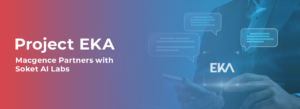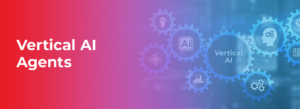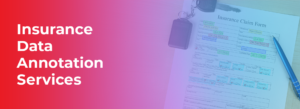The Comprehensive Guide to 2D-3D Fusion Data Annotation
Data integration is a vital aspect in such advanced technologies as automatic vehicles, robotics, and augmented reality that need to fuse between 2D and 3D information. The process of 2D-3D fusion data annotation is crucial for creating highly accurate models capable of understanding the real world and interacting with it. This blog discusses the importance and applications of 2D-3D fusion data annotation, challenges involved, why you should choose Macgence for high-quality data annotation services.
Understanding 2D-3D Fusion Data Annotation
To develop a comprehensive dataset on spatial relations as well as depth perception, two-dimensional images are combined with three-dimensional point clouds or models in what is called 2d – 3d fusion. Such fusions are important for machine learning training, especially where there is need for precise space understanding and interaction with physical environment.
Importance of 2D-3D Fusion Data Annotation
Enhanced Accuracy: By combining both types of data (two dimensional and three dimensional), more details about objects and their environments can be known hence improved performance by ML models.
Improved Spatial Understanding: For autonomous driving or robotics purposes, the model must understand spatial relationships through 2d -3d fusion.
Robustness in Real-World Applications: Models trained on fused data can better handle variations inherent to real-world cases leading to more reliable robustness.

Autonomous Vehicles
To enable them to perceive their surroundings accurately, comprehensive datasets for self-driving vehicles are created through a process called ‘’fusion’’. Aspects such as object detection/classification road layout understanding and vehicle movements’ predictions among others.
Robotics
Robots operating based on artificial intelligence need to move around and interact with their surrounding efficiently. Inclusion detailed area information used in object manipulation, path planning, and avoidance of obstacles is where 2D-3D fusion data annotation comes into play.
Augmented Reality (AR) and Virtual Reality (VR)
When it comes to AR and VR applications, blending 2D photographs with 3D models makes the virtual world more realistic and accurate. This is paramount for creating immersive experiences as well as ensuring precise interaction between the virtual objects and real-world objects.
Medical Imaging
In medical imaging, 2d – 3d fusion involves combining two dimensional scans like x-rays with three dimensional models such as CT scans to provide a whole body view. It helps in correct diagnosis and treatment planning.
Challenges in 2D-3D Fusion Data Annotation
Data Complexity
The fusion of 2D and 3D data means that one has to work on huge datasets that are complex. The problem lies in ensuring that we align all data timely and properly synchronize it.
Annotation Precision
High precision levels are necessary when annotating the 2D/3D hybrid data sets so that the model can learn exact spatial relationships within the image. It calls for keen attention to details together with sophisticated annotation tools.
Integration of Multiple Data Sources
Sometimes, fusing between 2d – 3d may mean combining information from several sensors or sources. Synthesizing such data through harmonization into single coherent dataset is not an easy task.
How Macgence Excels in 2D-3D Fusion Data Annotation
Our experts at Macgence have deep knowledge of processes involved in fusing together both types of images (two-dimensional or three-dimensional) without errors; hence they deliver highly accurate results depending only on customer requirements. Here’s how we stand out:
Expertise in Multi-Modal Data Annotation
Our team of specialists has a lot of experience since we multi-modal annotated data which encompasses aligning two-dimension and three-dimension images with 2D pictures. We offer precise annotation in 3D through use of state-of-the-art techniques and tools.
Custom Solutions
We offer custom annotation solutions that will suit the needs of your project. Our team can tailor our services to deliver the best possible results in areas such as autonomous vehicles, robotics, AR/VR, or medical imaging.
Advanced Quality Control
Our main concern has always been quality. We have enforced strict quality control measures in order to ensure that our annotations are of high accuracy and consistency.
Ethical and Compliant Practices
This means data privacy regulations and ethical standards with which we comply to ensure responsible use and protection of your data.
Conclusion
Developing sophisticated machine learning algorithms involving accurate spatial awareness and interaction with reality necessitates operations such as fusion data annotation. At Macgence, we are dedicated to delivering first-rate 2-D-3-D Fusion Data Annotation Services that meet superior standard qualities demanded by clients. Join us now to take advantage of our expertise and gain strong data annotations that will power your AI projects.
(FAQs)
Ans: – 2D-3D fusion data annotation refers to the combination of 2D images with either 3D point cloud or models for making an inclusive dataset. Researchers also utilize these datasets to train machine learning models so that the models can accurately understand and interact with the real-world environment.
Ans: – Accuracy and robustness of machine learning models highly depend on 2D-3D fusion data annotation. It arises from enhancement in spatial understanding thus being crucial in applications like autonomous driving, robotics, AR/VR and medical imaging industry among others.
Ans: – Macgence ensures the quality of 2-D-3-D Fusion Data Annotations through expert annotation teams, advanced tools, rigorous quality control measures, customized solutions based on specific project requirements as well as adherence to ethical and compliant practices in handling data.
You Might Like
February 28, 2025
Project EKA – Driving the Future of AI in India
Artificial Intelligence (AI) has long been heralded as the driving force behind global technological revolutions. But what happens when AI isn’t tailored to the needs of its diverse users? Project EKA is answering that question in India. This groundbreaking initiative aims to redefine the AI landscape, bridging the gap between India’s cultural, linguistic, and socio-economic […]
March 7, 2025
What is Data Annotation? And How Can It Help Build Better AI?
Introduction In the world of digitalised artificial intelligence (AI) and machine learning (ML), data is the core base of innovation. However, raw data alone is not sufficient to train accurate AI models. That’s why data annotation comes forward to resolve this. It is a fundamental process that helps machines to understand and interpret real-world data. […]
March 6, 2025
Vertical AI Agents: Redefining Business Efficiency and Innovation
The pace of industry activity is being altered by the evolution of AI technology. Its most recent advancement represents yet another level in Vertical AI systems. This is a cross discipline form of AI strategy that aims to improve automation in decision making and task optimization by heuristically solving all encompassing problems within a domain. […]
March 5, 2025
Use of Insurance Data Annotation Services for AI/ML Models
The integration of artificial intelligence (AI) and machine learning (ML) is rapidly transforming the insurance industry. In order to build reliable AI/ML models, however, thorough data annotation is necessary. Insurance data annotation is a key step in enabling automated systems to read complex insurance documents, identify fraud, and optimize claim processing. If you are an […]





